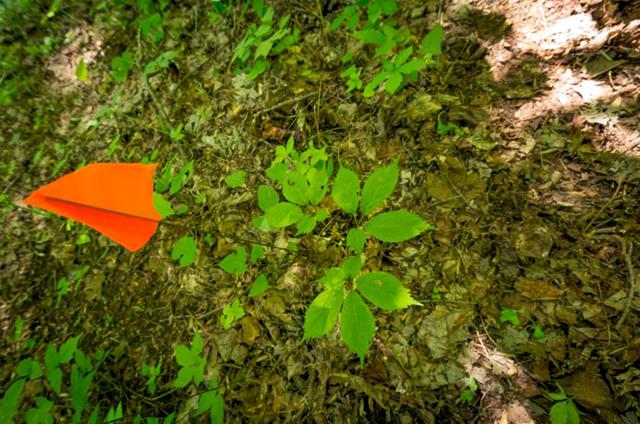Micah Jasny is a graduate student from the Nicholas School of the Environment at Duke University working this summer as an E.O. Wilson Biodiversity Foundation intern, as part of the ATBI/BioBlitz SWAT Team. His work is supported through a partnership with Discover Life in America. This summer he will try to discover new species to add to the park inventories in order to better understand park ecosystems and how to care for them. He also plans to help other scientists working in the park with their biodiversity surveys and scientific research. In the upcoming weeks, he will give weekly updates about his forays into the park and report back on his biodiversity research.
ATBI/BioBlitz SWAT Team: Week 2 in Great Smoky Mountains National Park
Ginseng Protection, Monitoring and Replanting
This week, we went out to monitor threatened populations of ginseng (genus Panax of the Araliaceae family) with Ms. Janet Rock. Janet is a botanist and is in charge of the ginseng replanting and population monitoring program here in Great Smoky Mountains National Park. Wild ginseng present within the park are under threat because of the root’s lucrative value in certain markets. For this reason, poachers often enter the park to illegally hunt wild ginseng which has resulted in a steep decline in the population.
Janet replants ginseng that has been seized by the park and then monitors the population’s success. Janet informed us that the park may catch eight to ten poachers a year and seize hundreds of poached roots. Recaptured ginseng roots are then dyed to mark the ginseng as belonging in the park. This special dye can be picked up by black light and helps regulators determine whether the ginseng was taken legally. Once treated with the dye, the roots are then taken back out into the woods and replanted. The replanting sites are kept secret from the public in order to protect the wild ginseng and maintain the park ginseng population’s viability.


Ginseng is a small whorled understory plant with five leaves at the end of each prong branching out of the main stem. Young ginseng plants may have one or two prongs while mature plants have three or four whorled prongs. When ginseng is fertile, a very small flower (about half an inch) will grow from the central stem. Ginseng is not a great disperser so it is common to find a cluster of ginseng plants with smaller ones occurring around the larger parental plant.
I went along with the Discover Life in America (DLIA) interns and some park interns into the field with Janet to see how the ginseng planted last summer were fairing. Out in the woods, Janet would point out indicator species such as blood root and blue cohosh that may suggest the presence of ginseng. While these species may help to find ginseng, Virginia creeper looks very similar to ginseng and can easily be misidentified. At a location, we would all fan out and scour the underbrush for the tiny plants. Once we found one, we would mark them with small flags and continue searching. After about half-an-hour of searching and marking ginseng plants, we would collect the flags and tell Janet how many prongs each plant had and whether it was fertile or not. I admit that much of the time I spent searching for ginseng, I was more focused on making sure I did not step on any!
The park’s actions to protect ginseng is a testament to their roles as guardians and protectors of the natural forests. Their role is to maintain these forests and the species that inhabit it so that it may be enjoyed for generations to come. I was very glad that I could take part in monitoring the ginseng and I hope that the park’s efforts will lead to stabilization and future growth of the ginseng population.
—Micah Jasny

